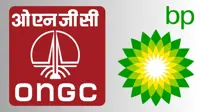India’s factory output at 17-month peak; optimism continues
01 Aug 2014
The HSBC India Purchasing Managers' Index (PMI) reached a 17-month peak of 53.0 in July, up from 51.5 in June, indicating a strong improvement in business conditions.
 The HSBC report said business conditions in the Indian manufacturing sector improved for the ninth consecutive month in July, as companies scaled up production in response to robust demand.
The HSBC report said business conditions in the Indian manufacturing sector improved for the ninth consecutive month in July, as companies scaled up production in response to robust demand.
However, employment deteriorated fractionally, while inflationary pressures continued to emerge, particularly on the supply side.
In line with the headline indicator, output grew at the quickest rate since February 2013 in July, marking a nine-month period of increasing production.
Anecdotal evidence associated solid output growth with strengthening order books. Among the monitored sub-sectors, producers of intermediate goods scaled up production at the sharpest pace, the HSBC analysis noted.
July data confirmed reports of further improvements in demand as new orders increased at an accelerated pace, extending the current sequence of growth to nine months. Sector figures indicated a marked rise of new work intakes in the intermediate goods category.
Similarly, new business from abroad rose for a tenth successive month in July. Panellists commented on strong demand from key export clients. As a result of consistently rising demand and subsequent production requirements, purchasing activity by Indian manufacturers rose solidly in July.
Further, it was the fastest expansion in buying activity since February 2013. Input buying was raised across each of the sub-sectors, with the strongest increase registered by intermediate goods companies.
Pre-production inventories grew in July as purchasing activity continued to rise. However, the rate of accumulation was moderate overall. Likewise, stocks of finished goods expanded fractionally in July. In both cases, inventory accumulation was recorded in the consumer and intermediate goods sectors, while stocks were depleted in the capital goods category.
Meanwhile, workforce numbers were reduced for the first time since September 2013 in July.
The rate of job shedding was marginal; nonetheless, declines in employment were seen by producers of consumer and intermediate goods, with only investment goods firms reporting job creation. Concurrently, backlogs of work increased in July. Where work-in-hand rose, a number of panel members cited problems with their power supply.
Higher prices paid for metals, plastics, textiles, packaging, food and energy led to a further marked increase in input prices in July. The rate of cost inflation was the quickest since February. Rising costs were only partially evident in July's increase in output prices, as the rate of charge inflation was slight overall and muted in comparison with historical data.
.webp)



.webp)


.webp)

























